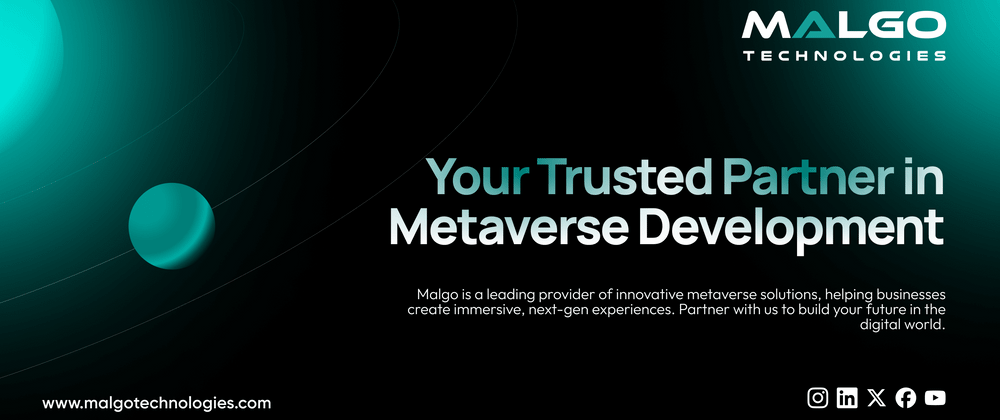A metaverse development company builds interactive virtual platforms using technologies like 3D modeling, blockchain, virtual reality (VR), and artificial intelligence. These platforms allow users to connect, collaborate, and experience digital environments in ways that feel immersive and natural. The process is detailed and requires technical planning, user experience design, and backend development, all while keeping scalability and security in mind.
Below is a breakdown of the stages that define how such companies operate — from initial planning to final deployment.
Defining the Purpose and Virtual Architecture
Every project begins with a clear intention. Whether it's for gaming, virtual real estate, social networking, or online education, the platform must be built with specific functionality in mind. This early planning phase sets the foundation for the kind of user experience the virtual world will offer.
Virtual architecture is then planned — this includes the layout of digital spaces, user interaction logic, and the role of NFTs or cryptocurrencies if applicable. The structure must support large user bases, real-time activity, and smooth navigation, all while being visually appealing and intuitive.
Selecting Development Tools and Technologies
Once the purpose is established, the next step is choosing the right tools. Developers select engines like Unity or Unreal Engine to build 3D environments. These engines support high-quality graphics and real-time physics, making them ideal for lifelike interactions.
Blockchain integration is common in projects where ownership, transaction transparency, or decentralization is required. In such cases, companies may use Ethereum, Polygon, or Solana networks for handling smart contracts and in-world assets like avatars, skins, and digital land.
Augmented reality (AR) and VR technologies are added to enhance immersion. These require compatibility with devices such as Oculus, HTC Vive, or mobile platforms, depending on the target audience.
Smart Contract and Blockchain Integration
For decentralized platforms or those using token economies, blockchain plays a significant role. Smart contracts are written to handle ownership rights, in-world purchases, and secure data storage.
This step involves collaboration between blockchain developers and backend engineers. They ensure that tokens or assets have traceability, can be traded or sold, and remain secure even during high-volume activity.
Privacy and safety protocols are also implemented at this stage. This includes user verification, anti-fraud systems, and encryption to protect sensitive data.
Designing 3D Environments and Avatars
User engagement depends heavily on the quality of design. Designers create interactive, themed worlds where avatars can move freely, engage in events, or complete tasks. These environments must not only look realistic but also perform smoothly across various devices.
Avatars and virtual objects are crafted using tools like Blender or Maya. Developers pay close attention to detail in clothing, animations, and movement responsiveness to keep the experience enjoyable and interactive.
Looking to launch a custom metaverse platform? Work with a metaverse development company that builds scalable and immersive experiences from the ground up.
Multi-Platform Accessibility
A strong metaverse platform works across different devices — VR headsets, desktops, and mobile phones. Developers create responsive designs to support varied screen sizes and input types.
Cross-platform integration also includes backend syncing so users can pick up from where they left off, no matter which device they switch to. This step helps increase adoption by removing barriers to entry.
Load balancing and real-time rendering are handled to maintain performance even when thousands of users are active simultaneously. This requires server-side logic built to support fast data processing and low latency.
AI and Interactive Features
AI-powered characters, voice recognition, and chatbots are often integrated to simulate realistic communication and activities. For example, users may encounter NPCs (non-player characters) in virtual games or receive AI-driven support in a metaverse office space.
Machine learning helps in customizing experiences. By analyzing user behavior, the platform can adapt content or recommend new interactions, keeping the environment dynamic.
Testing, Optimization, and Deployment
Once the initial build is complete, quality assurance teams test every function — from avatar movement and visual effects to payment systems and third-party integrations. Bug fixing and performance tuning take priority here.
Stress testing is also done to simulate high-traffic situations, ensuring the system won’t crash under load. After thorough validation, the platform is deployed and monitored closely in its early stages.
Analytics tools are embedded to track user behavior, engagement rates, and system errors. This helps in planning future updates or new feature rollouts.
Long-Term Support and Upgrades
After launch, the development company typically stays involved for maintenance, feature expansion, and upgrades. Security patches, compatibility updates, and user interface improvements are regularly applied.
As trends shift and new technologies emerge, virtual platforms are adjusted to stay current and competitive. This helps maintain long-term user engagement and value.
Final Thoughts
The process of building a virtual platform is highly structured and technical. A metaverse development company brings together specialists in blockchain, AI, 3D design, and systems architecture to create environments that users can engage with in real time.
With demand growing across industries, these platforms are becoming increasingly important for education, business, entertainment, and social interaction. Companies entering this space need a reliable technical partner capable of building secure, user-friendly virtual environments from concept to launch.
Need expert guidance on launching a secure and scalable digital environment? Partner with professionals who understand every step of virtual platform creation.




Top comments (0)